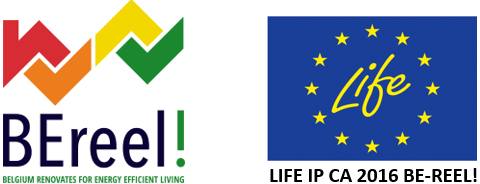Step-by-step testing and optimalization of the housing passport
Gathering feedback through user tests and citizen surveys
User tests were organized to improve the housing passport. In addition, a feedback button was added to the housing passport to query users' experiences. This button also examines to what extent the housing passport can become a guideline for the implementation of energy-saving measures during the renovation process.
A citizen survey was also organized at the beginning of 2021 to gather answers on some key questions about citizens’ use of the housing passport during renovations, the accessibility of information, the effectiveness of the support the tool provided, etc. The first results were available in June 2021.Gathering feedback from energy houses and BE REEL! partners
Besides user tests and citizen surveys,
feedback was also gathered from different sources. Flanders has 18 energy
houses where a citizen can go for information, advice and guidance in the
implementation of energy-saving renovation works. These energy houses regularly
examine to what extent the housing passport can contribute even more to quality
renovation advice.
BE REEL!’s partner cities of Ghent, Antwerp and
Mechelen are also actively using the housing passport to support renovation
supervision in their demonstration projects. Workshops are regularly organised
with them to highlight their experiences and to investigate the strengths and
weaknesses of this tool.
The housing passport aims to reach as many
segments of the housing market as possible during renovation projects. That is
why any requests of other parties (social rental offices, social housing
companies, provincial centers for sustainable construction, residential
offices, partners of the renovation pact) are also taken into account.
Co-creation with stakeholders
In order to convert the needs of the users into
easily understandable information and useful functions, all development
processes are set up in co-creation with a fixed group of stakeholders such as
consumer organizations. In this way, different parties can influence the design
process and its result.
The tool today is the result of intense
cooperation between several Flemish public agencies (Flemish Energy and Climate
Agency, Department of Environment, Housing Flanders, Flemish Public Waste
Agency, Fluvius, Flemish Environment Agency, Aqua Flanders, Vlario). These
partnerships will be expanded even further in the future.
